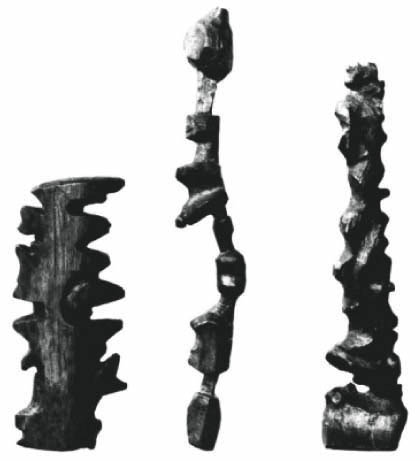 [Image: tactile maps of the Inuit: 3D representations of the Greenland coastline].
[Image: tactile maps of the Inuit: 3D representations of the Greenland coastline].She compares these to Braille maps for the blind—which I would further compare to the embossing printer used by a blind architect in San Francisco to produce tactile building plans. "He began drawing with Wikki Stix," the L.A. Times reported last month, "strands of wax-covered yarn that adhere to paper with just a little pressure. His most useful tool became a large-format embossing printer, which turns blueprints into raised line drawings that he can read with his fingertips."
As if using the Inuit maps pictured above, he simply runs his fingers along the creased lines of rooms and hallways, and buildings take shape in their every variation around him.
Briefly diverging here, I was fascinated to read elsewhere in that same article about the subtle architectural design cues that can be deployed for the blind or visually impaired. For instance, the architect once "collaborated on a room-numbering system to help blind students navigate the building. The facility will use different textured flooring in a few key areas so students can tell where they are by the tap of a cane." Further, "blind students who descend a staircase that deposits them in the middle of a vast lobby will be able to find their way because the ceiling will be enhanced, at [the architect's] suggestion, to create an acoustic corridor to the door." Designing "acoustic corridors" across the city sounds like a superb design challenge (as well as something that could be of much wider use in the event of prolonged urban blackouts).
In any case, like Middle Savagery, I am fascinated by the other applications these sorts of handheld, tactile maps might have—where else they might be useful and what other spaces they might be able to represent. Could there be a tactile map of a novel's plotline, or or the New York City subway system, or of the Appalachian Trail? What about of your own apartment, or the house you grew up in? Could there be tactile cinema? Could you make a tactile map of a song?
(Spotted via an old post on Tightgrid).
No comments:
Post a Comment